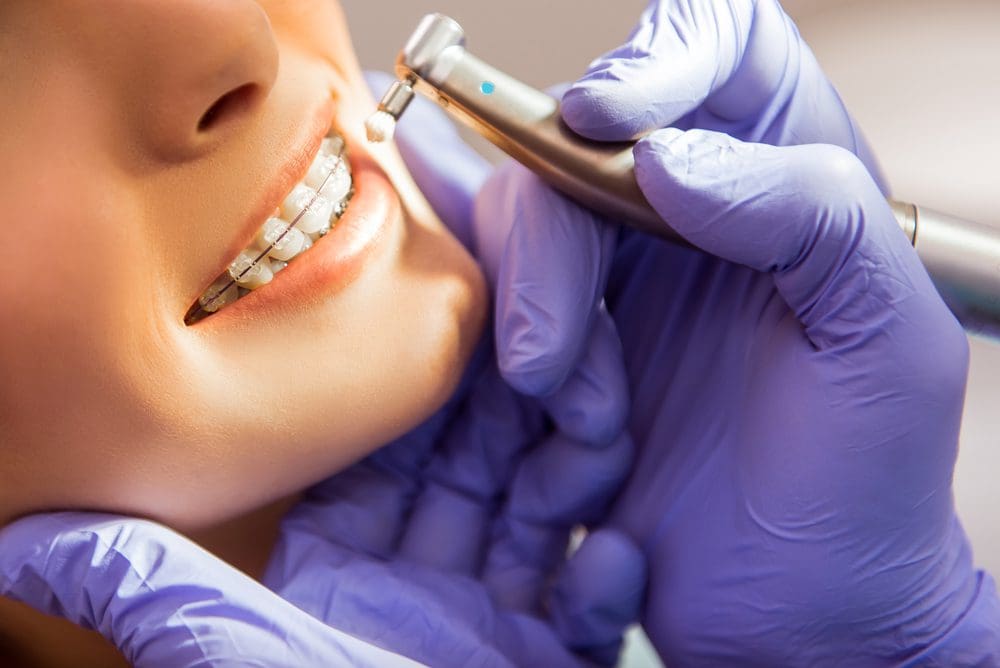Why Cumming Invisalign is the Perfect Option for a Discreet Orthodontic Service
Why Cumming Invisalign is the Perfect Option for a Discreet Orthodontic Service
Blog Article
Comprehensive Overview to Orthodontics Procedures for Correcting Oral Imbalances
In the realm of orthodontics, the journey to accomplishing a perfectly lined up smile involves a myriad of treatments customized to remedy dental misalignments. From conventional braces to unnoticeable aligners and even medical choices, the area of orthodontics offers a series of remedies to address varying levels of oral abnormalities. Understanding the intricacies of each procedure, including their systems, advantages, and potential disadvantages, is crucial in making notified choices concerning one's orthodontic therapy. As we navigate through the detailed overview to orthodontic treatments for correcting dental misalignments, the detailed information of each method will unfold, dropping light on the course towards a unified and useful oral alignment.
Orthodontic Procedures Overview

In enhancement to standard braces and clear aligners, orthodontists may likewise recommend various other interventions like headwear, palatal expanders, or retainers to resolve certain placement issues (cumming orthodontics). These treatments are tailored per individual's special requirements and may entail a mix of treatments to achieve the wanted results. Regular changes and surveillance are vital parts of orthodontic treatment to ensure progression gets on track and to make any type of required alterations along the road. By going through orthodontic treatments, individuals can not only accomplish a straighter grin but likewise improve their general oral health and wellness and function.
Traditional Dental Braces: How They Function
When thinking about orthodontic therapies for dental misalignments, standard braces stand apart as a time-tested approach for remedying teeth positioning. Traditional dental braces are composed of brackets, cords, and bands that interact to use continual pressure on the teeth, gradually relocating them into the desired placement. The brackets are attached to the teeth making use of a special adhesive, and the cords are threaded via the brackets. By readjusting the tension of the wires, orthodontists can regulate the direction and pressure put on each tooth, guiding them right into appropriate alignment with time.
One key facet of just how conventional dental braces job is the process of bone remodeling. As pressure is put on the teeth with the braces, the bone bordering the teeth is reshaped to support the brand-new tooth placements. This improvement is vital for the long-lasting security of the remedied positioning. Clients will require routine adjustments at the orthodontist's workplace to ensure the braces remain to apply the right stress for efficient teeth activity.
Invisible Aligners: Pros and Cons
These clear, personalized trays are essentially undetectable when used, making them an attractive choice for individuals seeking a more cosmetically pleasing orthodontic treatment. Patients can get rid of the aligners prior to eating or brushing their teeth, lowering the danger of food getting stuck in the device and simplifying the cleaning procedure.

Surgical Orthodontic Options
Surgical treatments in orthodontics present practical choices for attending to intricate oral misalignments that may not be efficiently solved via standard orthodontic treatments. While conventional braces and undetectable aligners can deal with numerous orthodontic problems, specific situations need medical treatment to attain optimum outcomes. Surgical orthodontic options are generally advised for extreme malocclusions, substantial jaw discrepancies, and cases where the underlying bone framework requires alteration to accomplish appropriate positioning.
One typical surgical orthodontic procedure is orthognathic surgery, which entails rearranging the jaws to correct practical issues such as problem chewing or speaking. This surgical treatment is usually done in cooperation with an orthodontist that aids straighten the teeth before and after the procedure. Surgical orthodontics may also include treatments to expose affected teeth, remove excess gum cells, or improve the jawbone to produce a much more unified facial profile.
Before thinking about surgical orthodontic options, patients undertake a thorough examination to figure out the necessity and possible benefits of such interventions. cumming orthodontist. While surgery might seem complicated, it can considerably boost both the function and aesthetic appeals of the smile in instances where traditional orthodontic therapies read more drop short
Retainers and Post-Treatment Treatment

Failing to conform with post-treatment treatment guidelines can result in regression, where the teeth gradually move back towards their original settings. Constant retainer wear, great dental health, and routine oral examinations are crucial for keeping the outcomes attained via orthodontic surgical procedure and ensuring the lasting stability of the corrected oral alignment.
Conclusion
In final thought, orthodontic treatments provide numerous alternatives for fixing dental imbalances. Typical braces use metal brackets and cables to change teeth into proper positioning. Unseen aligners provide a more discreet alternative however might not appropriate for all instances. Surgical orthodontic alternatives are readily available for extra severe misalignments. Retainers are frequently made use of post-treatment to maintain the new alignment. On the whole, orthodontic procedures can properly boost dental wellness and visual look.
As we navigate via the comprehensive overview to orthodontic treatments for remedying oral misalignments, the intricate details of each method will certainly unfold, dropping light on the path towards a functional and harmonious oral alignment. - aligners
One of the most common orthodontic therapies is the usage of braces, which are composed of steel brackets and cords that use gentle stress to gradually move dentist career information teeth into the preferred placement.When considering orthodontic therapies for dental imbalances, traditional dental braces stand out as a time-tested technique for dealing with teeth placing. official site Furthermore, unseen aligners might not be suitable for intricate orthodontic problems that call for more considerable teeth movement, as they are typically suggested for light to moderate situations. Retainers are personalized orthodontic devices developed to hold teeth in their dealt with placements after the completion of orthodontic therapy.
Report this page